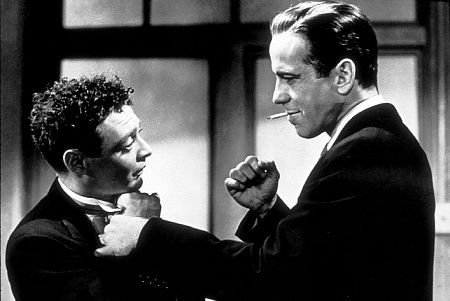Spade is about to unknowingly enter the criminal underbelly of the city. The individual against the threatening collective, a key theme in film noir. But in 1941, the year of the film's cinematic release, there was no film noir. Writer-director John Huston, together with his cinematographer Arthur Edeson, tapped into something with his dark crime thriller that inspired audiences and influenced like-minded filmmakers all through Hollywood.
On the outside, The Maltese Falcon might have looked like your average Warner Bros. gangster movie, a genre which they had pursued over the last decade or so. Something, however, had slowly but surely changed the cinematic landscape. Maybe it was the rising influence of French poetic cinema or German expressionism on the American market, or perhaps people began to sense the impending dread and frustration of WW2. For whatever reason, out of all this, private detective Samuel Spade was born. An openly selfish man, who makes morally ambiguous choices and commits adultery. The anti-hero of the 40s and 50s.
Bogart's Spade is repeatedly tricked and seduced by Mary Astor's shady “femme fatale”. She involves him in the search for the Maltese Falcon, a priceless statuette. Along the way, Spade is confronted with numerous henchmen and untrustworthy individuals, such as Peter Lorre's slimy crook Joel Cairo. Our hero is framed in doorways, corridors and other confines of the city in imagery reminiscent of European cinema. Highly evocative and progressive for it's time, with undertones of eroticism, The Maltese Falcon had an instant strong impact on American culture.
Huston would go on to make other film noirs, such as The Asphalt Jungle, and Bogart would soon become Hollywood's biggest star. Bogart and Huston would work together again many times, but in a sense their first collaboration proved to be their most important contribution to film history.
Any admirer of film noir and classic films, should watch The Maltese Falcon.
By Movie Parliament Minister for History,
Leonhard Balk

 RSS Feed
RSS Feed
